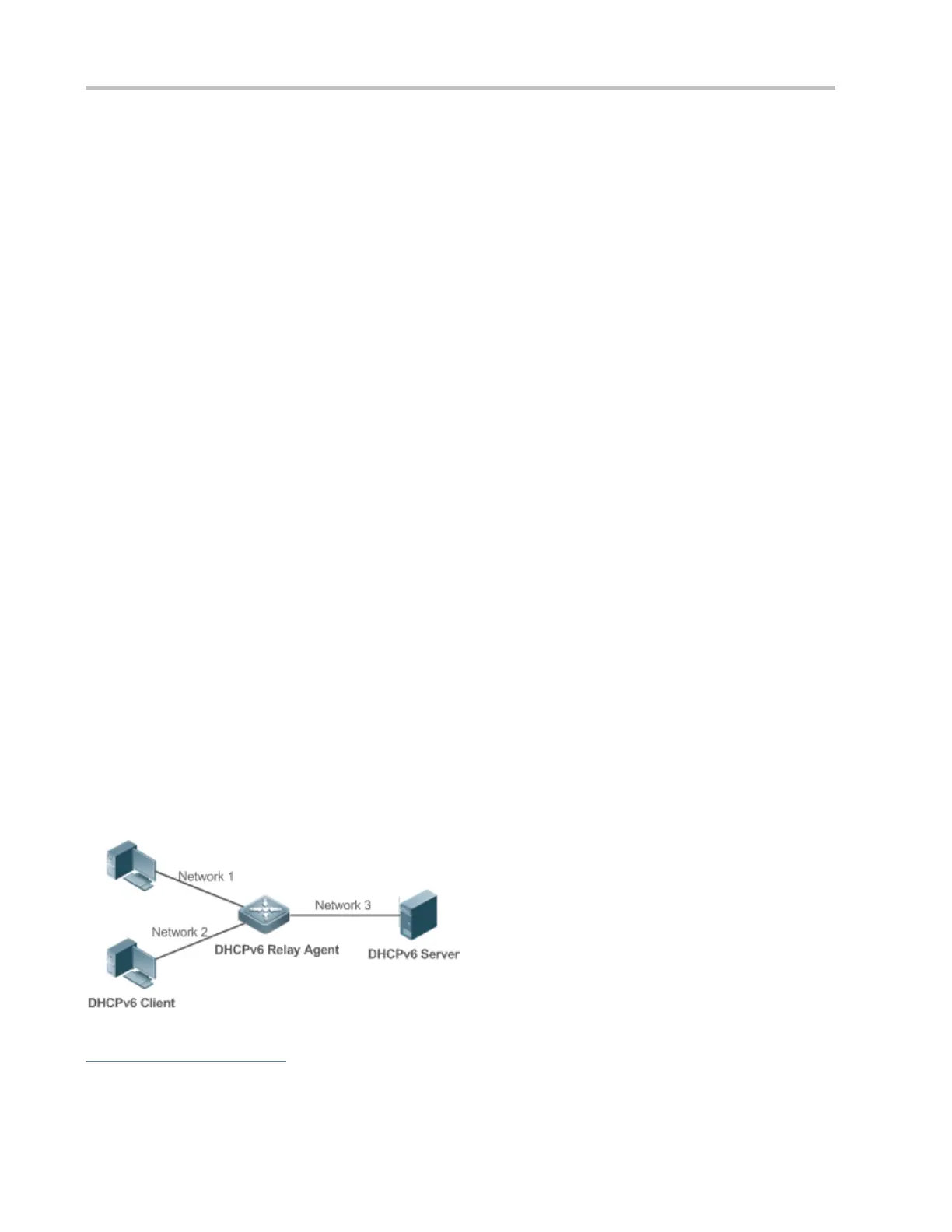Configuration Guide Configuring DHCPv6
5 Configuring DHCPv6
5.1 Overview
The Dynamic Host Configuration Protocol for IPv6 (DHCPv6) is a protocol that allows a DHCP server to transfer
configurations (such as IPv6 addresses) to IPv6 nodes.
As compared with other IPv6 address allocation methods, such as manual configuration and stateless automatic address
configuration, DHCPv6 provides the address allocation, prefix delegation, and configuration parameter allocation.
DHCPv6 is a stateful protocol for automatically configuring addresses and flexibly adding and reusing network
addresses, which can record allocated addresses and enhance network manageability.
By using the prefix delegation of DHCPv6, uplink network devices can allocate address prefixes to downlink network
devices, which implements flexible station-level automatic configuration and flexible control of station address space.
The DHCPv6 configuration parameter allocation solves the problem that parameters cannot be obtained through a
stateless automatic address configuration protocol and allocates DNS server addresses and domain names to hosts.
DHCPv6 is a protocol based on the client/server model. A DHCPv6 client is used to obtain various configurations whereas a
DHCPv6 server is used to provide various configurations. If the DHCPv6 client and DHCPv6 server are not on the same
network link (the same network segment), they can interact with each other by using a DHCPv6 relay agent.
The DHCPv6 client usually discovers the DHCPv6 server by reserving multicast addresses within a link; therefore, the
DHCPv6 client and DHCPv6 server must be able to directly communicate with each other, that is, they must be deployed
within the same link. This may cause management inconvenience, economic waste (a DHCPv6 server is deployed for each
subnet) and upgrade inconvenience. The DHCPv6 relay agent function can solve these problems by enabling a DHCPv6
client to send packets to a DHCPv6 server on a different link. The DHCP relay agent is often deployed within the link where a
DHCPv6 client resides and is used to relay interaction packets between the DHCPv6 client and DHCPv6 server. The DHCP
relay agent is transparent to the DHCPv6 client.
Figure 5-1
Protocols and Standards
RFC3315: Dynamic Host Configuration Protocol for IPv6

